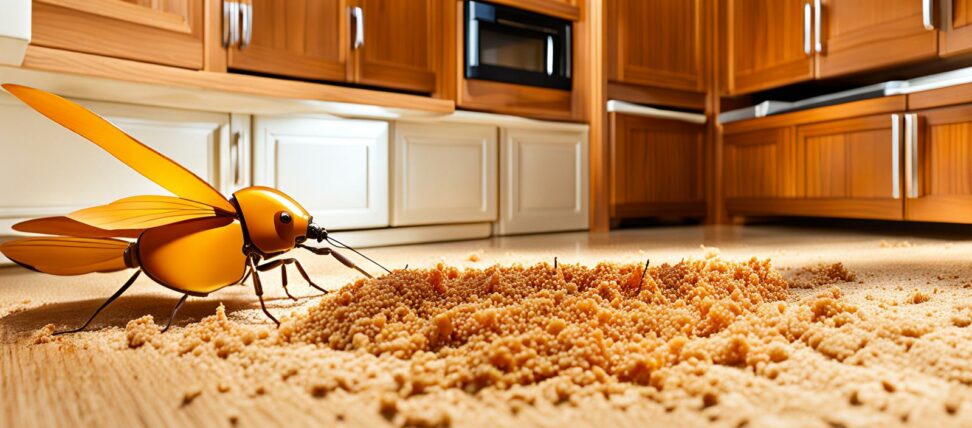Get Rid of Termites in Cabinets in 3 Easy Steps
Dealing with a termite infestation in your kitchen cabinets can be frustrating. Left unchecked, these wood-destroying pests can cause serious structural damage. But with the right approach, you can permanently eliminate termites from your cabinets in just a few straightforward steps.
With vigilance and by addressing conditions that attract termites, your kitchen can be termite-free.

Step 1: Inspect Cabinets and Confirm Termites
Before treating an infestation, you’ll need to positively identify that you are in fact dealing with termites. Carefully check your cabinets for key signs of termites:
- Mud tubes along cabinet edges and walls
- Hollowed out areas of wood
- Crumbly drywall around crevices
- A hollow sound when tapping on wood
- Flying termite swarms, often seen in spring
Not sure if it’s termites? There are differences between termites, carpenter ants, and wood-boring beetles. Familiarize yourself with termite biology and appearance to avoid false identification.
Professional Inspection
For a large infestation, getting a professional termite inspection can be beneficial. A licensed exterminator will:
- Pinpoint the location and extent of termites
- Identify entry points like cracks in foundations
- Determine if it’s subterranean, drywood, or dampwood termites
- Provide chemical or bait treatment options
An inspection also allows you to develop a targeted pest control plan. DIY methods often work for moderate cases.
Step 2: Apply DIY Treatment in Cabinets
For small infestations, there are several effective DIY methods to eliminate termites right in your cabinets.
Borate Powder
Applying borate powder into infested cabinets is a low toxicity option. After ingesting the powder, it causes termites to die. Here’s how to use it:
- Drill small holes into damaged areas of cabinets
- Puff borate powder into the holes reaching hollow voids
- Products like Tim-Bor or Bora-Care can be sprayed or fanned in
- The powder creates a long-lasting toxic barrier
Diatomaceous Earth
Diatomaceous earth is composed of tiny fossilized diatoms that destroy an insect’s exoskeleton. To apply:
- Drill access holes into infested cabinet areas
- Use a flour sifter to distribute a fine layer of diatomaceous earth
- Wear a mask to avoid breathing in the dust
- Works by dehydrating termites leading to death
Essential Oils
Some research shows essential oils like tea tree, eucalyptus, and cinnamon deter termites. Limitations include:
- Not a standalone treatment, more of a supplemental deterrent
- Oils must have direct contact with termites
- Effects tend to be temporary
- Apply a few drops directly into infested holes
Caution should be used with oils around food prep surfaces.
Other DIY Options
Borax and fungicidal dusts can also kill termites with similar application methods. Evaluate the pros and cons of DIY treatment versus professional extermination for more severe infestations.
Step 3: Prevent Termites from Returning
Eliminating conducive conditions helps avoid recurring termite problems after treatment. Here are some tips:
Seal Entry Points
Termites exploit gaps and cracks to enter structures. Sealing with caulk or foam will help:
- Caulk small crevices and openings around cabinets
- Apply foam sealant in larger damaged areas
- This removes direct access points into cabinets
Address Moisture
Excessive moisture and humidity attract termites. Be diligent about:
- Fixing leaky pipes, clogged drains, water damage
- Improving kitchen ventilation
- Eliminating standing water and condensation
Keep vigilant even after treatment. Early detection allows for quick action:
- Reapply borate dust annually as preventive measure
- Inspect regularly for new mud tubes or damage
- Have a professional inspection done each year
With regular monitoring and prompt treatment, your cabinets can stay termite-free for good.
Dealing with termites takes diligence, but is very doable using these DIY methods. With an organized plan and persistence, you can successfully eliminate termites from your kitchen cabinets.